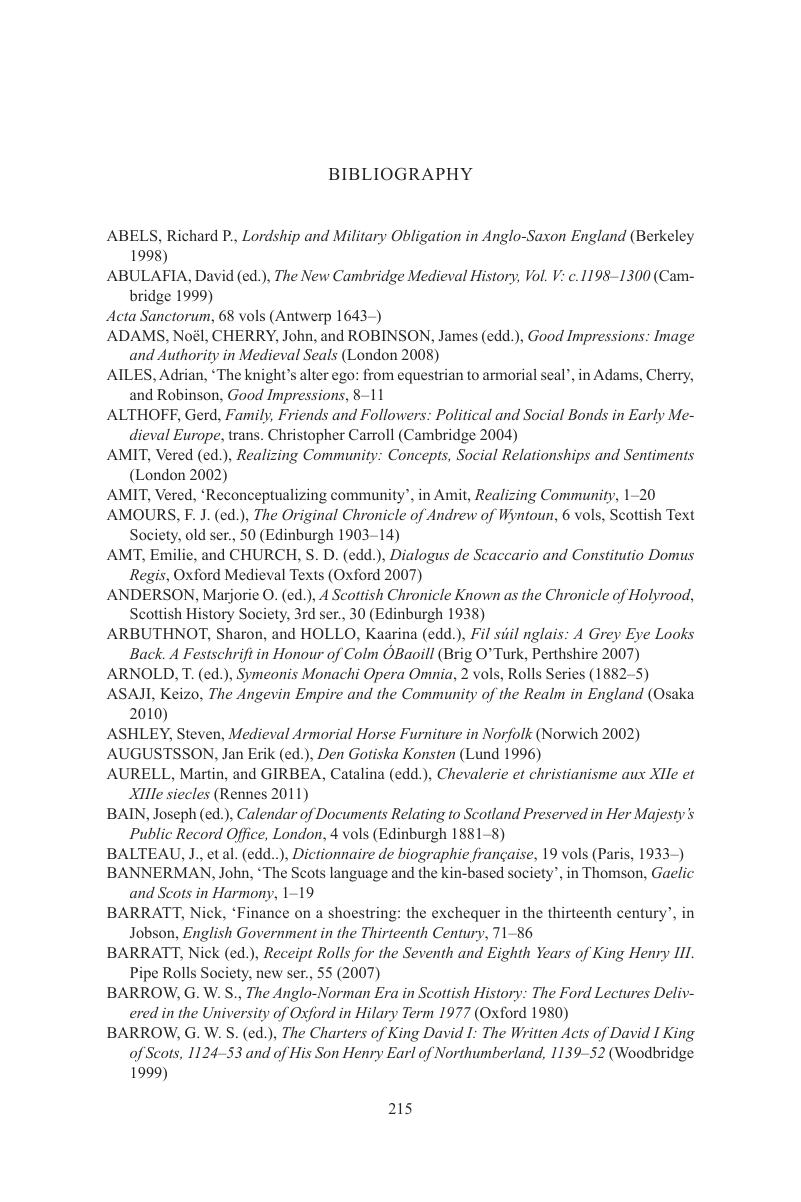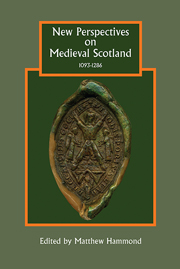Book contents
- Frontmatter
- Contents
- List of illustrations and tables
- List of contributors
- Acknowledgements
- Abbreviations
- Maps
- 1 Introduction: The paradox of medieval Scotland, 1093–1286
- 2 The Scottish ‘political community’ in the reign of Alexander II (1214–49)
- 3 Homo ligius and unfreedom in medieval Scotland
- 4 Scottish royal government in the thirteenth century from an English perspective
- 5 Neighbours, the neighbourhood, and the visnet in Scotland, 1125–1300
- 6 Cistercian identities in twelfth- and thirteenth-century Scotland: the case of Melrose Abbey
- 7 The language of objects: material culture in medieval Scotland
- 8 Structuring that which cannot be structured: a role for formal models in representing aspects of medieval Scotland
- Bibliography
- Index
- STUDIES IN CELTIC HISTORY
Bibliography
Published online by Cambridge University Press: 05 August 2013
- Frontmatter
- Contents
- List of illustrations and tables
- List of contributors
- Acknowledgements
- Abbreviations
- Maps
- 1 Introduction: The paradox of medieval Scotland, 1093–1286
- 2 The Scottish ‘political community’ in the reign of Alexander II (1214–49)
- 3 Homo ligius and unfreedom in medieval Scotland
- 4 Scottish royal government in the thirteenth century from an English perspective
- 5 Neighbours, the neighbourhood, and the visnet in Scotland, 1125–1300
- 6 Cistercian identities in twelfth- and thirteenth-century Scotland: the case of Melrose Abbey
- 7 The language of objects: material culture in medieval Scotland
- 8 Structuring that which cannot be structured: a role for formal models in representing aspects of medieval Scotland
- Bibliography
- Index
- STUDIES IN CELTIC HISTORY
Summary

- Type
- Chapter
- Information
- New Perspectives on Medieval Scotland, 1093-1286 , pp. 215 - 236Publisher: Boydell & BrewerPrint publication year: 2013

